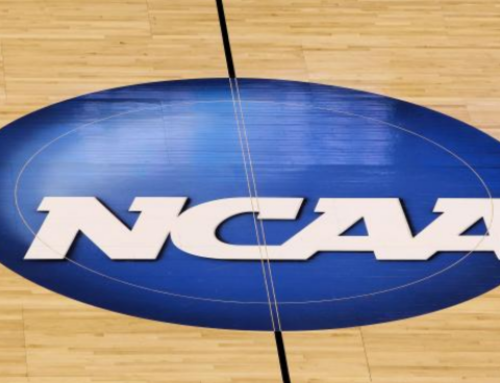I Want to Play Sports in College But I’m Not Getting Recruited. What Should I Do?
Every serious high school athlete has a similar dream for the next step of their athletic lives—to get recruited and play their sport of choice in college. If things go especially well, they’ll even earn some kind of scholarship.
But sometimes it’s not this simple.
Whether it was a lack of exposure, a badly timed injury, or a combination of countless potential factors, the student-athlete isn’t getting recruited in the way they were hoping. The best-case scenario doesn’t always happen—even if everything possible is done to set up the student-athlete for future success. So if this happens, what options are available for a soon-to-be college student to keep the sport they love in their lives for another four years?
Walking On
If a student-athlete doesn’t get recruited (or they get recruited by colleges they simply don’t want to attend), there is always the option to try and walk on as a non-scholarship player at a school of their choosing. There are actually different categories of walk-on athletes depending on the athletic program they’d like to try and join.
Preferred walk-ons are student-athletes who have been chatting with a coach and are guaranteed a roster spot once they officially become a student at that institution. They’ll receive the same kind of on-campus support as any other student-athlete, with the only real difference being that they won’t receive any scholarship for their athletic ability.
Recruited walk-ons differ from preferred walk-ons because although they’ve had conversations with a coach, they’re not guaranteed a roster spot. These walk-ons are expected to try out for a team upon arriving at campus.
Unrecruited walk-ons are probably the category of walk-on that’s most widely understood and known. They haven’t had any substantial conversations with coaches prior to arriving on campus. They hear of an open tryout, attend and try to impress the coaches enough to make the team.
The level of walk-on a student-athlete is will likely dictate what their experience is like in a specific program, at least initially. Being a walk-on is difficult because playing time can be hard to come by. But if you’ve got the talent and you work hard, you can indeed eventually earn playing time and even a scholarship. If playing a varsity sport is of utmost importance, then this is the best shot that exists if the recruitment process doesn’t pan out as hoped. If you’re open to more circuitous routes, playing at a junior college may also be something worth examining.
Playing Intramurals
Many athletes just want an opportunity to get the competitive juices and that “rush” of competing. It doesn’t necessarily matter the level they play at. A great way to accomplish this is by taking advantage of a college’s intramural sports program. This allows students to form teams and compete against one another in all different kinds of sports that are offered.
This is a great opportunity for athletes to consider new sports they’ve never played before. But a common downfall for intramurals—especially for those who have grown up playing organized sports most of their life—is that this option is a little too informal. Which is why there is an increasingly popular alternative popping up at many schools…
Playing Club Sports
Participating in a club sport can often be the perfect mixture of varsity sports and intramurals. These programs aren’t NCAA-affiliated, but provide a competitive and intercollegiate athletic experience, albeit at a much less stressful and time-consuming level than varsity sports.
To get an accurate skill, competition and commitment level comparison, club sports typically fall somewhere between Division III and intramurals. A season is usually the length of what it’d be in high school. This is a great option because club-sport athletes still participate in leagues, conferences, and/or divisions, and they travel regionally to compete for championships and all-star teams. One of the biggest differences (depending on the school and sport itself) between this and varsity sports is that practices are usually only 2-3 times per week, with games/matches/competitions on the weekends.
This allows students to not miss classes or tests because of athletics. There’s also an offseason, enabling students to have a break to pursue other interests they may have.
If you’re a student-athlete or the parent of one who wants to play at the next level, take a deep breath! There isn’t just one way to have an athletic experience while in college. Participating in varsity sports may be the most popular, but there are other viable options that provide terrific opportunities.
Photo Credit: RichVintage/iStock
READ MORE:
RECOMMENDED FOR YOU
MOST POPULAR
I Want to Play Sports in College But I’m Not Getting Recruited. What Should I Do?
Every serious high school athlete has a similar dream for the next step of their athletic lives—to get recruited and play their sport of choice in college. If things go especially well, they’ll even earn some kind of scholarship.
But sometimes it’s not this simple.
Whether it was a lack of exposure, a badly timed injury, or a combination of countless potential factors, the student-athlete isn’t getting recruited in the way they were hoping. The best-case scenario doesn’t always happen—even if everything possible is done to set up the student-athlete for future success. So if this happens, what options are available for a soon-to-be college student to keep the sport they love in their lives for another four years?
Walking On
If a student-athlete doesn’t get recruited (or they get recruited by colleges they simply don’t want to attend), there is always the option to try and walk on as a non-scholarship player at a school of their choosing. There are actually different categories of walk-on athletes depending on the athletic program they’d like to try and join.
Preferred walk-ons are student-athletes who have been chatting with a coach and are guaranteed a roster spot once they officially become a student at that institution. They’ll receive the same kind of on-campus support as any other student-athlete, with the only real difference being that they won’t receive any scholarship for their athletic ability.
Recruited walk-ons differ from preferred walk-ons because although they’ve had conversations with a coach, they’re not guaranteed a roster spot. These walk-ons are expected to try out for a team upon arriving at campus.
Unrecruited walk-ons are probably the category of walk-on that’s most widely understood and known. They haven’t had any substantial conversations with coaches prior to arriving on campus. They hear of an open tryout, attend and try to impress the coaches enough to make the team.
The level of walk-on a student-athlete is will likely dictate what their experience is like in a specific program, at least initially. Being a walk-on is difficult because playing time can be hard to come by. But if you’ve got the talent and you work hard, you can indeed eventually earn playing time and even a scholarship. If playing a varsity sport is of utmost importance, then this is the best shot that exists if the recruitment process doesn’t pan out as hoped. If you’re open to more circuitous routes, playing at a junior college may also be something worth examining.
Playing Intramurals
Many athletes just want an opportunity to get the competitive juices and that “rush” of competing. It doesn’t necessarily matter the level they play at. A great way to accomplish this is by taking advantage of a college’s intramural sports program. This allows students to form teams and compete against one another in all different kinds of sports that are offered.
This is a great opportunity for athletes to consider new sports they’ve never played before. But a common downfall for intramurals—especially for those who have grown up playing organized sports most of their life—is that this option is a little too informal. Which is why there is an increasingly popular alternative popping up at many schools…
Playing Club Sports
Participating in a club sport can often be the perfect mixture of varsity sports and intramurals. These programs aren’t NCAA-affiliated, but provide a competitive and intercollegiate athletic experience, albeit at a much less stressful and time-consuming level than varsity sports.
To get an accurate skill, competition and commitment level comparison, club sports typically fall somewhere between Division III and intramurals. A season is usually the length of what it’d be in high school. This is a great option because club-sport athletes still participate in leagues, conferences, and/or divisions, and they travel regionally to compete for championships and all-star teams. One of the biggest differences (depending on the school and sport itself) between this and varsity sports is that practices are usually only 2-3 times per week, with games/matches/competitions on the weekends.
This allows students to not miss classes or tests because of athletics. There’s also an offseason, enabling students to have a break to pursue other interests they may have.
If you’re a student-athlete or the parent of one who wants to play at the next level, take a deep breath! There isn’t just one way to have an athletic experience while in college. Participating in varsity sports may be the most popular, but there are other viable options that provide terrific opportunities.
Photo Credit: RichVintage/iStock
READ MORE:
RECOMMENDED FOR YOU
Create A Free Recruiting Profile Today!
CaptainU helps athletes & parents not only be proactive but also to manage and take control of their entire recruiting journey.











